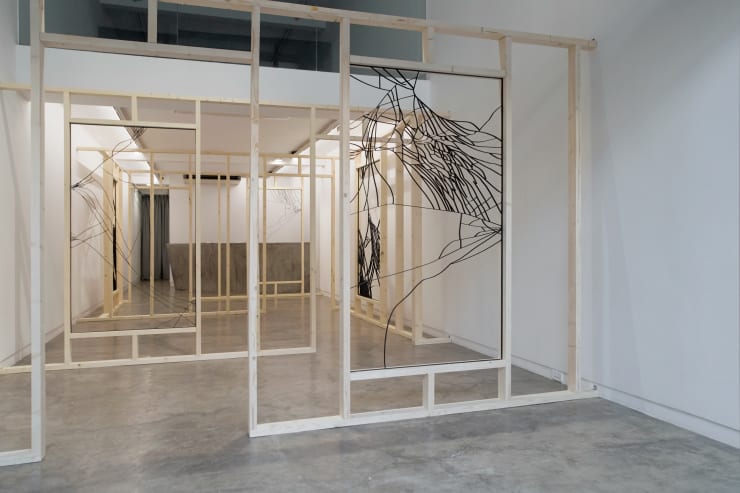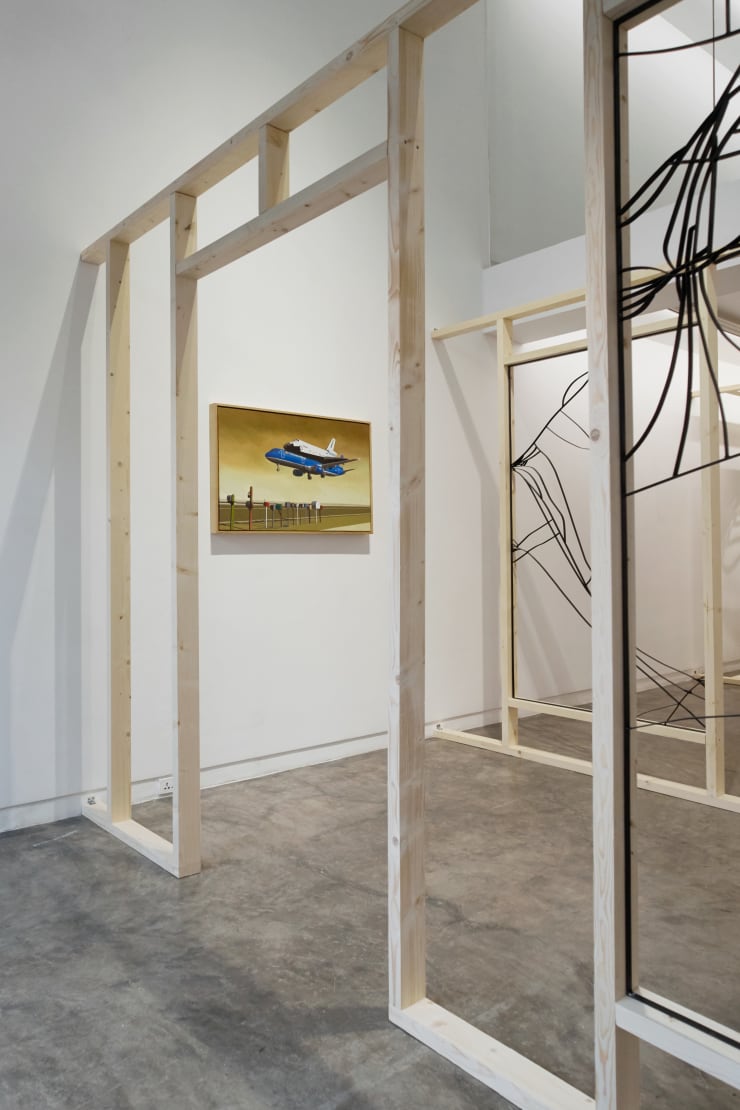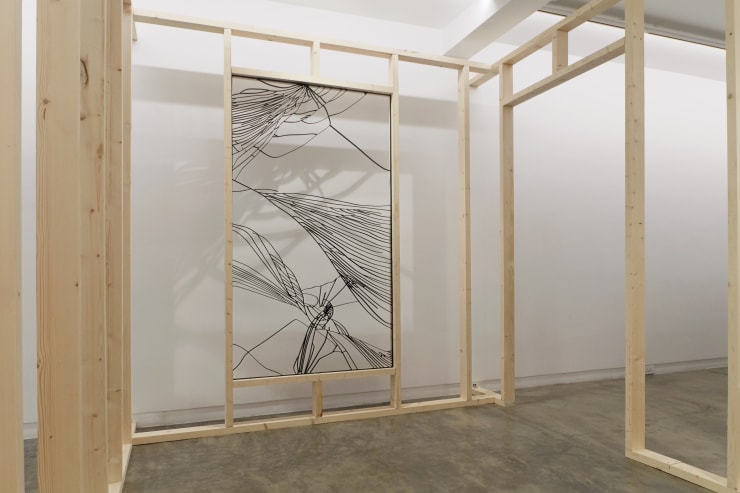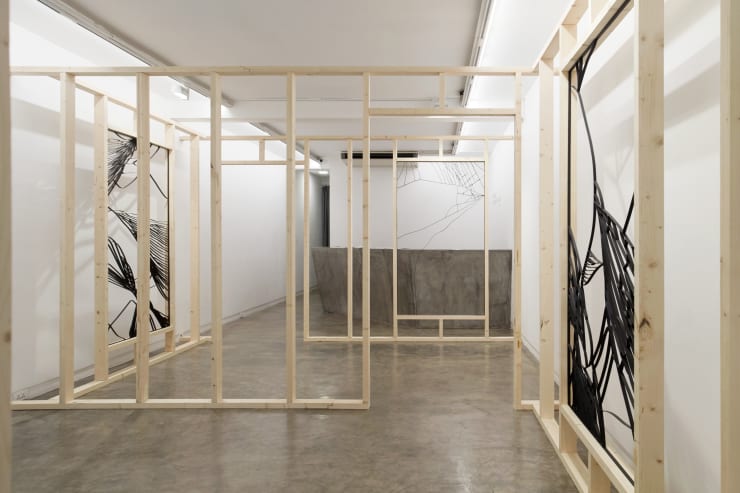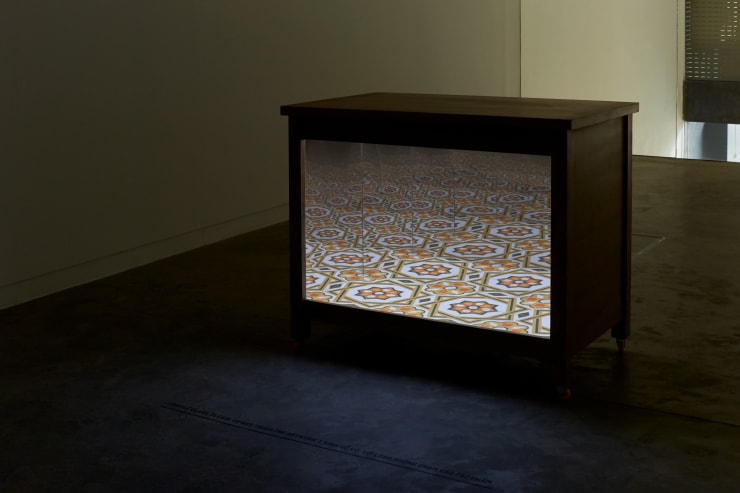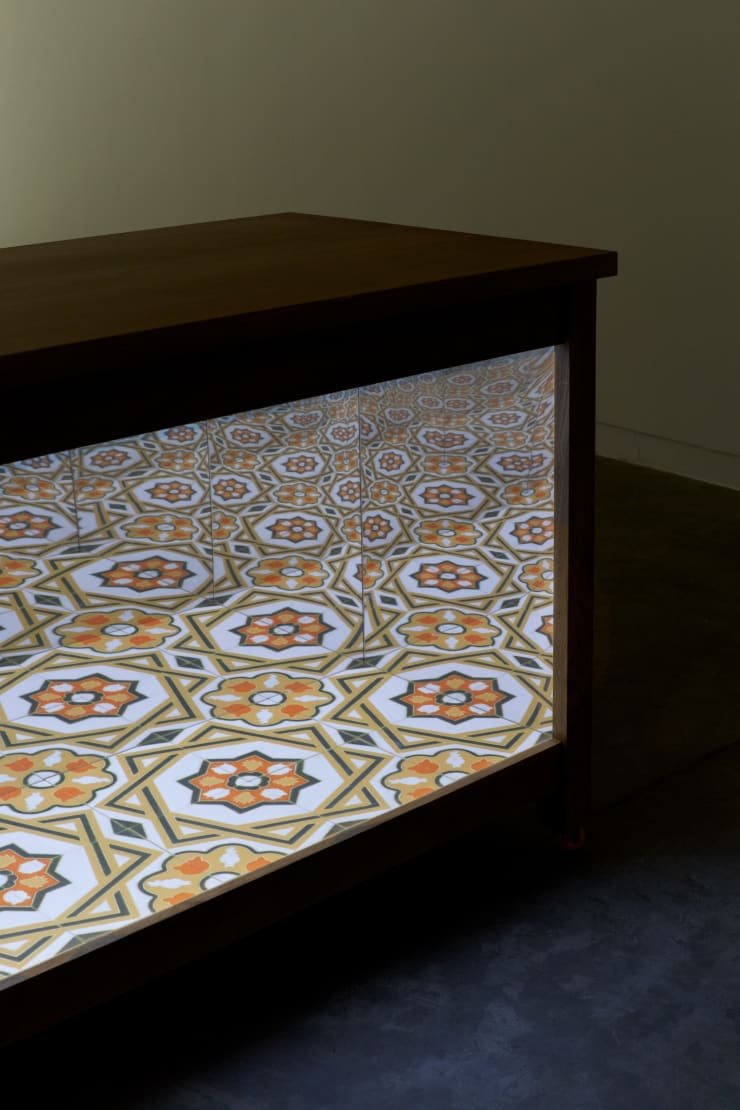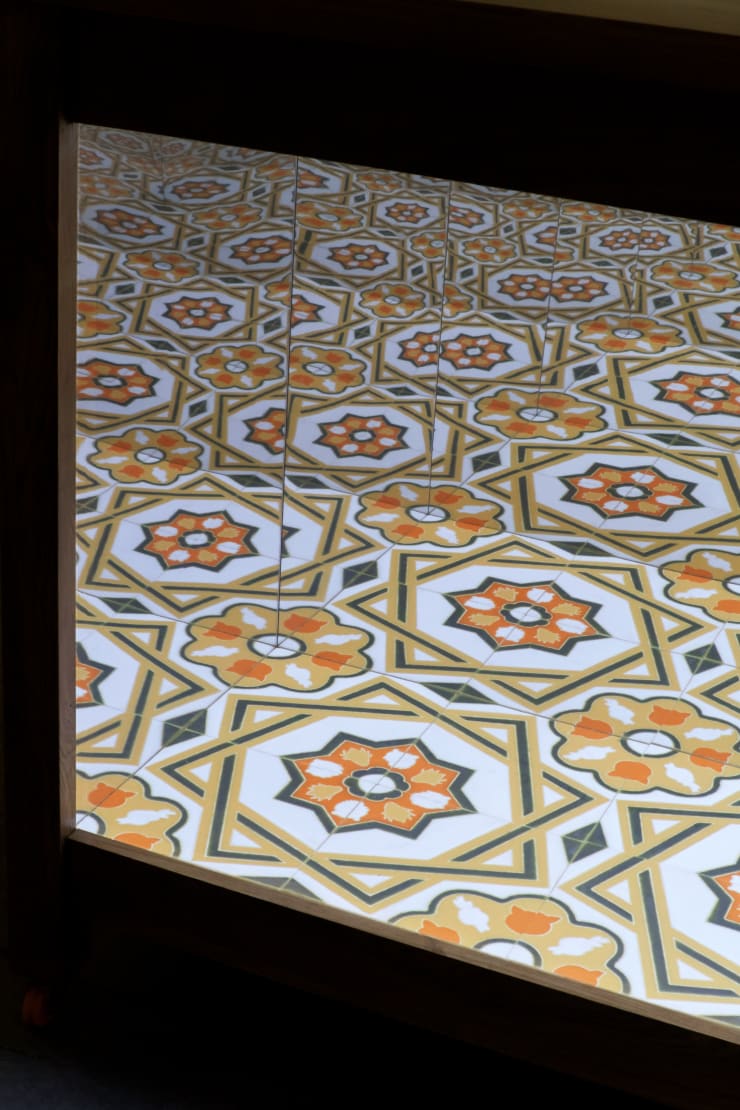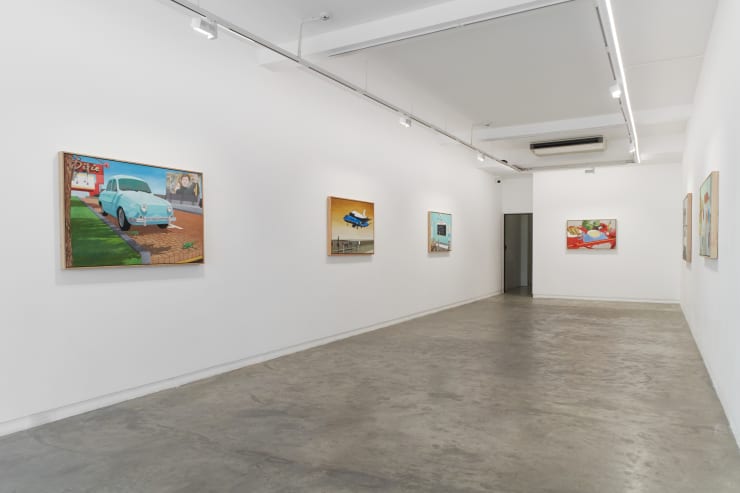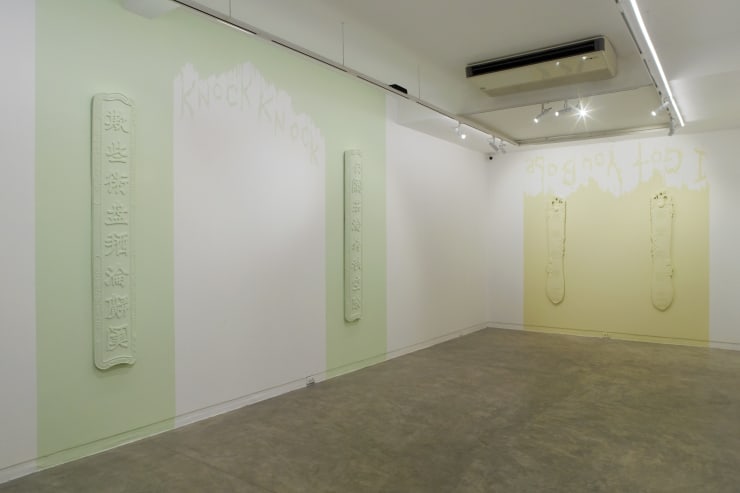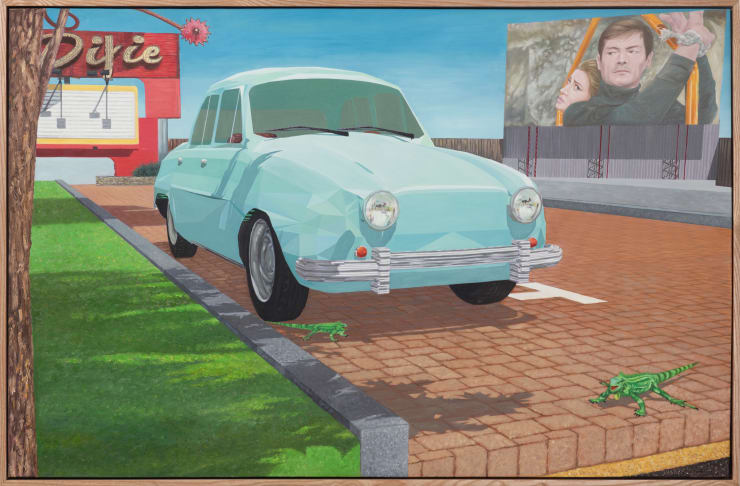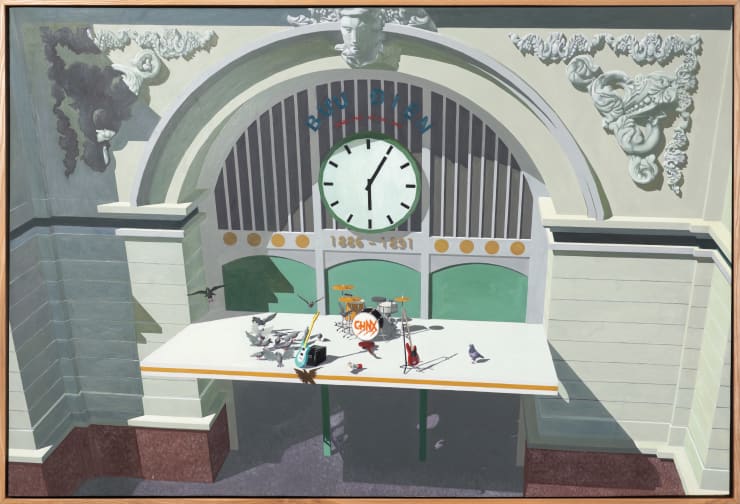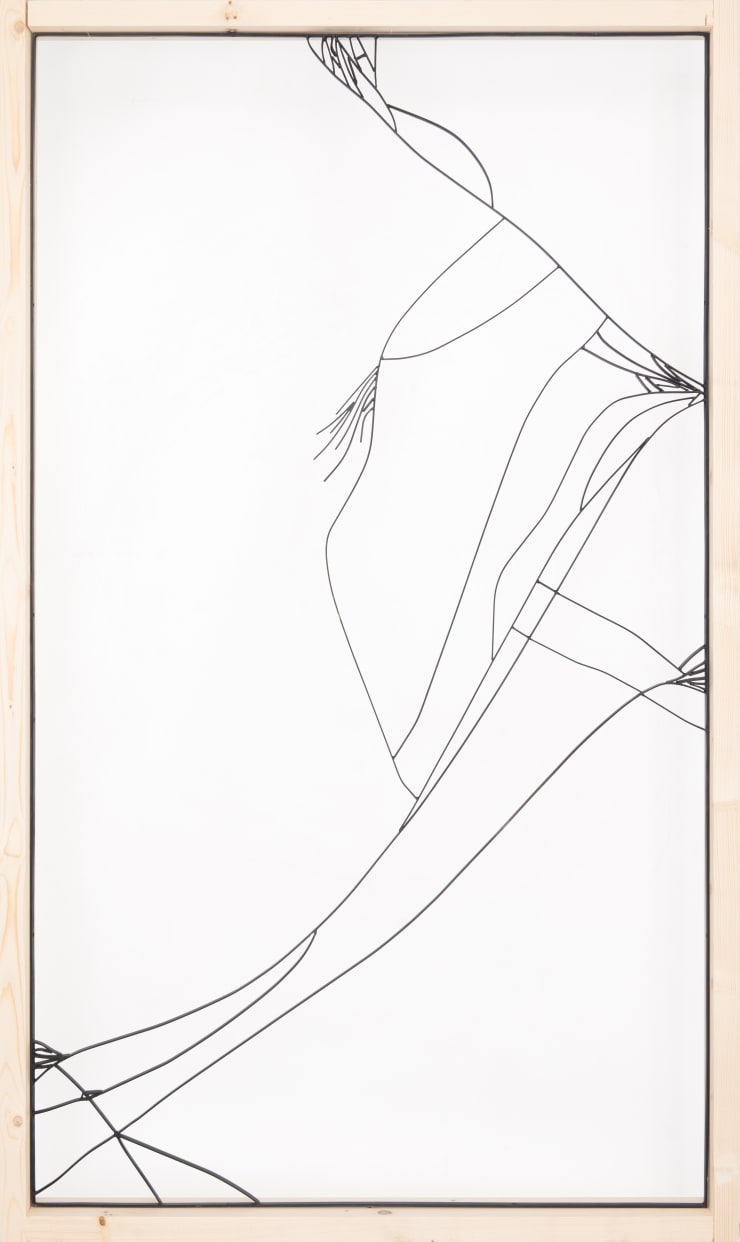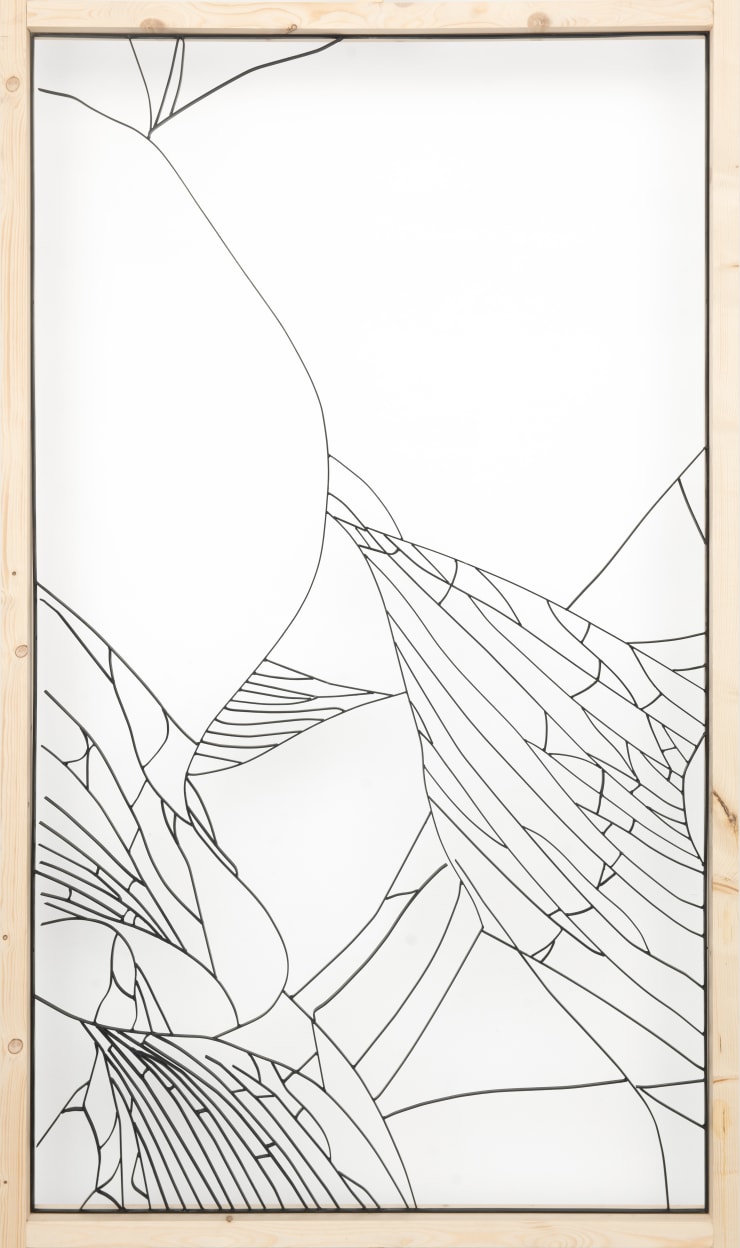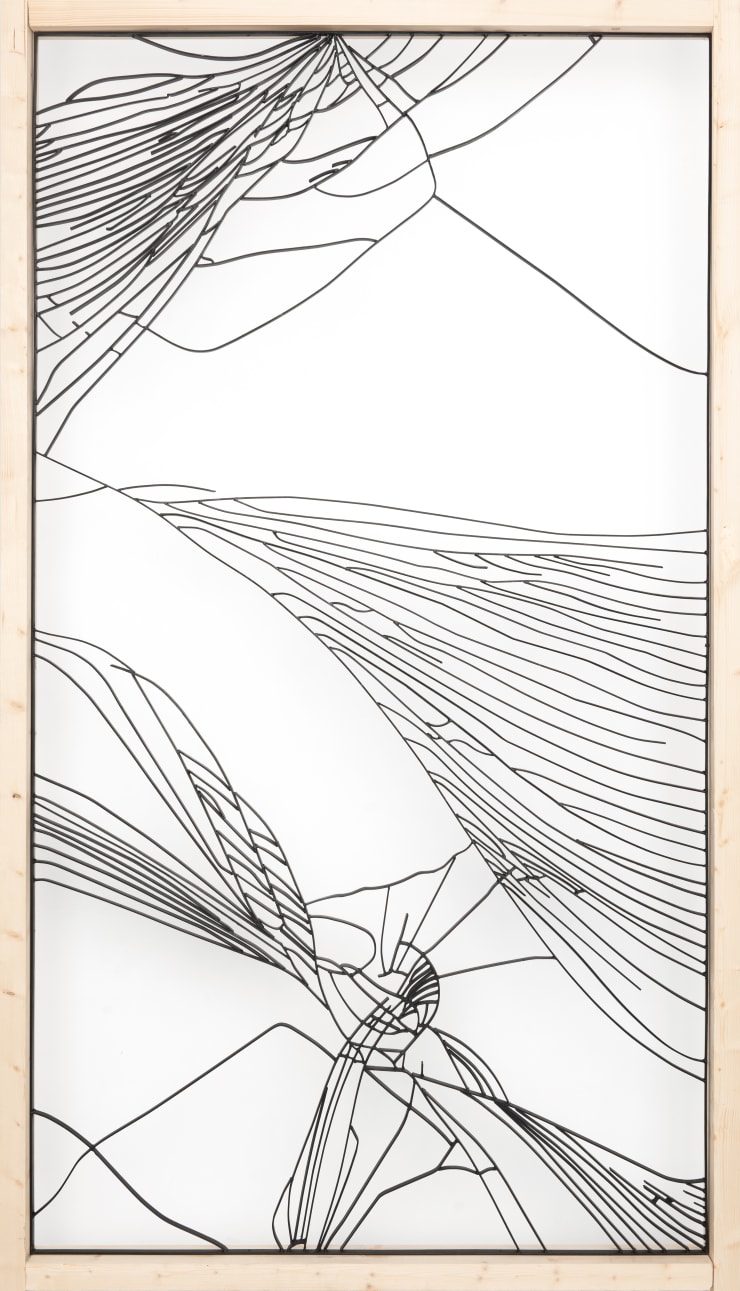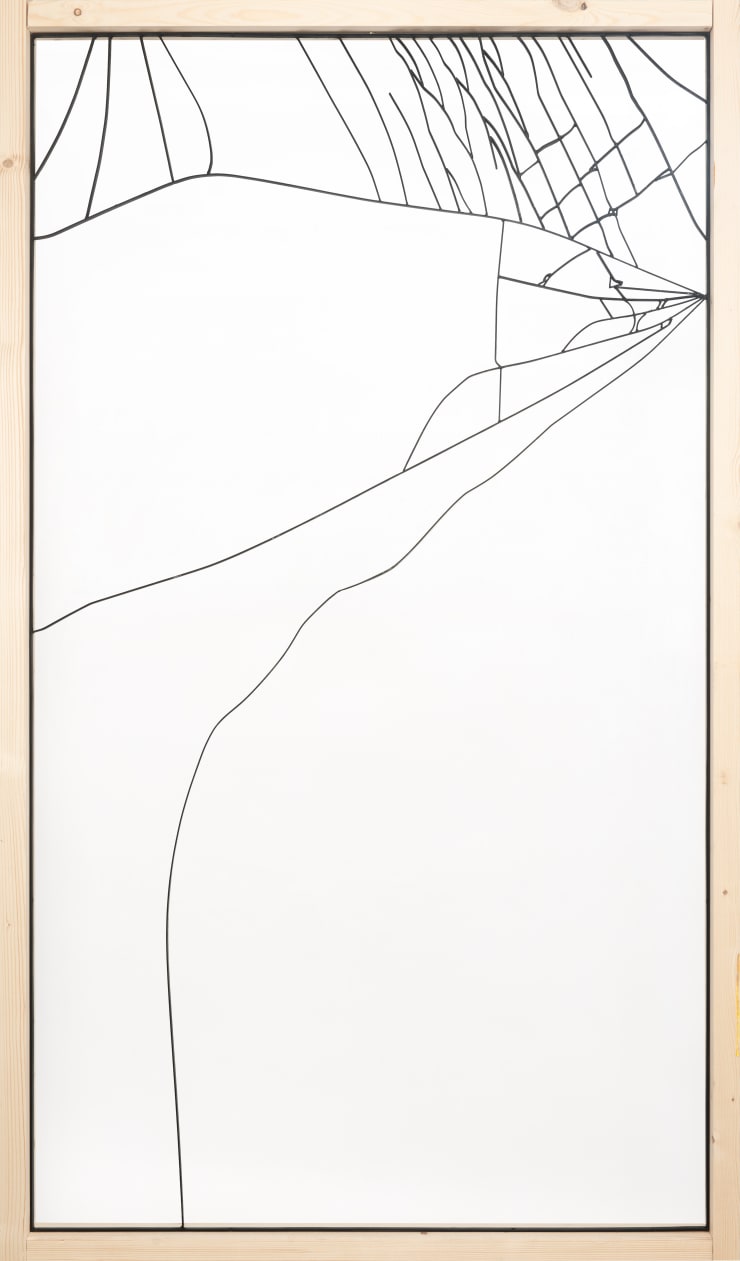Songs of Singularity: Trong Gia Nguyen
Past exhibition
Overview
Galerie Quynh is pleased to present Songs of Singularity — an exhibition of new work by Brussels-based artist Trong Gia Nguyen. For his third solo exhibition at the gallery, Nguyen will exhibit four distinct, but connected bodies of work that foreground ideas of conservation, accessibility, reproduction, and attribution of artworks.
The old philosophical experiment query “If a tree falls in a forest and no one is around to hear it, does it make a sound?” has been transposed in Nguyen’s latest show into something more akin to “does a person truly exist when all material evidence of their existence has vanished?” or, as stated by the artist, “There is a tenuous relationship with the past if no objects survived that past apart from you.”
In 2021, a flood in New York destroyed the majority of the artist’s works and personal archives. Songs of Singularity starts from this ground zero of loss and questions Nguyen’s own basic notion of how we “make things” in order to preserve the personal archive. Rather than trying to close this gap, the artist chose instead to widen it, erasing history versus recovering it.
One enters the gallery through an architectural skeleton framing iron window grates that depart from their traditional geometry into the fractured, cracked glass of mobile phones. The transparent window is now the black mirror of mediated existence into which we peek, peer, and give in to darker instincts while submitting to the Matrix.
On the calmer mezzanine level, a single work replicates a wooden kitchen island. One of its long sides is walled off by a see-through infinity mirror that repeats a traditional concrete tile pattern inside the cabinet. Island activates modesty in the service of potency, whereby a single tile and pattern can replicate and monumentalize itself, on and on. Importantly, the alchemy of these tiles has been altered by mixing in energized powdered crystals with the paint pigments. Crystals were chosen in relation to both the tile’s color palette and their inherent healing characteristics: Malachite is used to ward off danger and fight illness; Carnelian restores vitality and motivation and stimulates creativity and courage; Moonstone is associated with passion, balance, and luck; and Tiger's Eye is used to ground and cast off negativity. By charging and amplifying the domestic space, Nguyen looks at how modularity begets monumentalism at sites that have been relegated to a lesser status.
For Perpetual Paintings, the artist has sourced all manner of objects from Google’s online 3D Warehouse. Nguyen assembles new arrangements of the still life, or nature morte – literally “dead nature” in French. Items that were once tangible appear familiar yet detached, distant, and free of spatial or material limitations. In this evolving process of disappearing, the hand of the artist was next in line. A screenshot was taken of one chosen vantage point, and the painting was outsourced to a local atelier to be painted, even going so far as to have Nguyen’s own name signed on the canvas by someone else. These irreverent “anti-works” hurl toward a “private singularity”. One can see approximations and traces of the past, such as his father’s Renault Dauphine in which 14 members of the family crammed into on the day of reunification, racing against time. As companies like Open AI have made it easier to produce images and texts, and as artists respond by making more and more “stuff”, Nguyen seeks refuge where his own physicality is obviated in the process. Yet his still lifes seem to exist even more actively in the digital realm.
In the last gallery, in service of the sublime, Nguyen’s installation of câu đối panels similarly exits into a dematerialized, more poetic sphere. Traditionally used in pagodas, on altars, and outside homes, carved wooden couplets belong to a genre of Vietnamese prose literature written in Vietnamese Nôm characters, where two opposing, parallel sentences express its author's sentiments in honor of certain events or occasions in daily life. Nguyen takes liberties with the rules, and has composed a number of whimsical, suggestive phrases that have travelled various roads of translation to Nôm, the ancient ideographic vernacular script of the Vietnamese language that for centuries fell out of favor with the shifting dynasties. Today very few scholars are capable of reading it. Instead of the gilded writing, Nguyen’s câu đối panels are painted monochromatically the same color as the walls behind them, which also drips into a third text in English.
All the works train an eye to not the inevitability of mortality, but disappearance. There is an assumption that what is lost can ultimately be found, with a proper spell book. The câu đối works in the show, for example, represent a language that is practically lost in contemporary Vietnamese culture and scholarship. The words endure, even if they are cryptically a translation of Shakespeare, via Old English and contemporary Vietnamese. The hand-painted text on the walls that bridge the couplet panels act as a wave of the wand, summoning the living in spite of the dead. To the artist they are nothing but pure poetry, of that insistence from any pen that “I am here” and “I endure”. I am my own scales of justice and I have a sense of humor about it.
Installation Views
Works
-
 Trong Gia Nguyen, Vietnam Airlines & Space Shuttle, 2023
Trong Gia Nguyen, Vietnam Airlines & Space Shuttle, 2023 -
 Trong Gia Nguyen, Banh Mi Cart, 2023
Trong Gia Nguyen, Banh Mi Cart, 2023 -
 Trong Gia Nguyen, Back Where We Started, 2023
Trong Gia Nguyen, Back Where We Started, 2023 -
 Trong Gia Nguyen, Dauphine, 2023
Trong Gia Nguyen, Dauphine, 2023 -
 Trong Gia Nguyen, Classroom, 2023
Trong Gia Nguyen, Classroom, 2023 -
 Trong Gia Nguyen, Dining Table, 2023
Trong Gia Nguyen, Dining Table, 2023 -
 Trong Gia Nguyen, Post Office, 2023
Trong Gia Nguyen, Post Office, 2023 -
 Trong Gia Nguyen, Anne Frank House, 2023
Trong Gia Nguyen, Anne Frank House, 2023 -
 Trong Gia Nguyen, Island , 2023
Trong Gia Nguyen, Island , 2023 -
 Trong Gia Nguyen, Double Vision, 2023
Trong Gia Nguyen, Double Vision, 2023 -
 Trong Gia Nguyen, Eternal Return, 2023
Trong Gia Nguyen, Eternal Return, 2023 -
 Trong Gia Nguyen, Sonnet, 2023
Trong Gia Nguyen, Sonnet, 2023 -
 Trong Gia Nguyen, Cracked Mobile no.4, 2019
Trong Gia Nguyen, Cracked Mobile no.4, 2019 -
 Trong Gia Nguyen, Cracked Mobile no.6, 2019
Trong Gia Nguyen, Cracked Mobile no.6, 2019 -
 Trong Gia Nguyen, Cracked Mobile no.7, 2019
Trong Gia Nguyen, Cracked Mobile no.7, 2019 -
 Trong Gia Nguyen, Cracked Mobile no.8, 2019
Trong Gia Nguyen, Cracked Mobile no.8, 2019 -
 Trong Gia Nguyen, Cracked Mobile no.12, 2019
Trong Gia Nguyen, Cracked Mobile no.12, 2019

